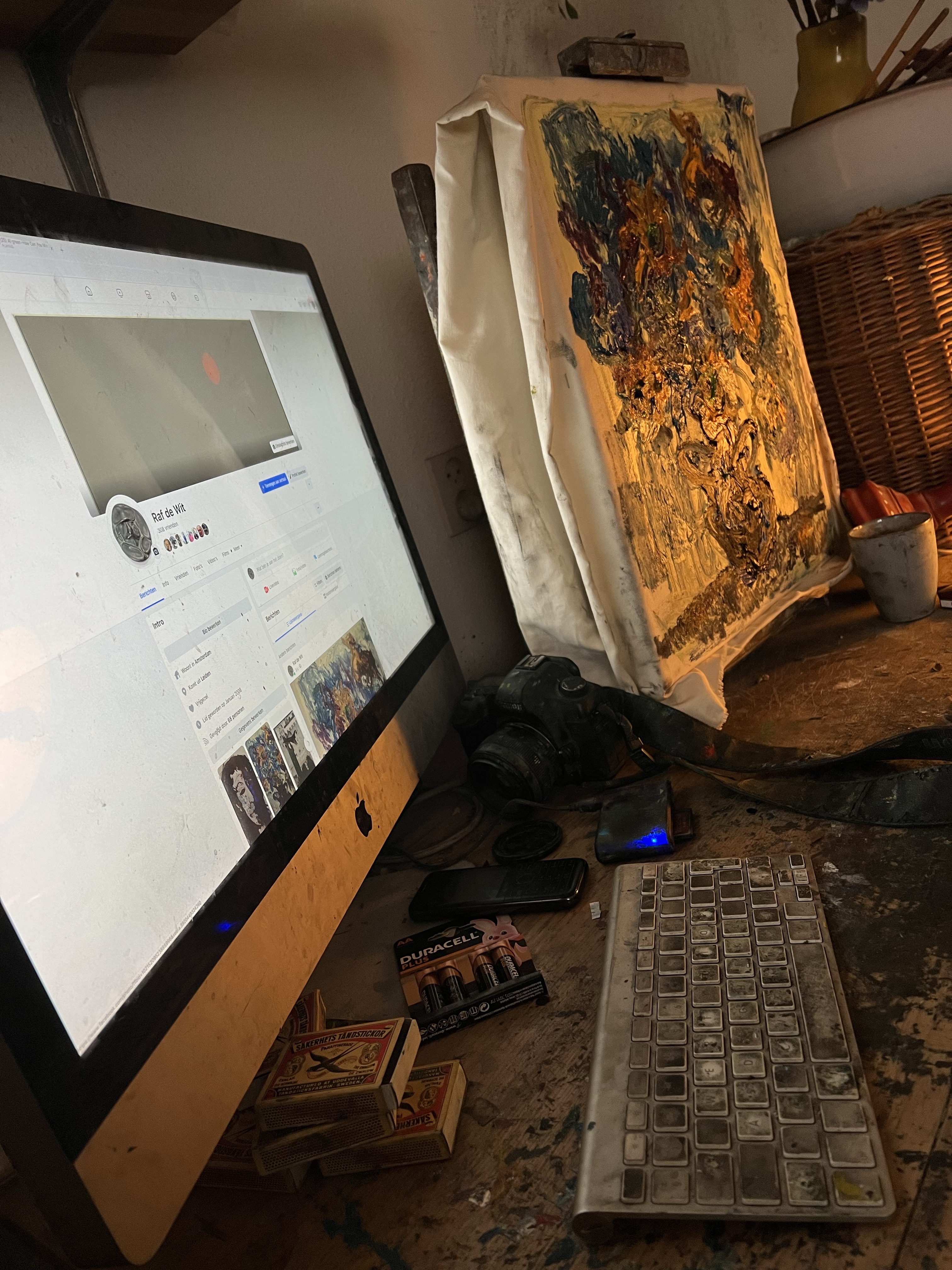Your cart is currently empty!
Exploring Wild Beauty: An Examination of Artistic Styles in the Works of Raf de Wit and His Predecessors

Introduction:
Artists throughout history have been captivated by the concept of wild beauty, seeking to capture its essence through various styles and techniques. Among these artists is Raf de Wit, whose exploration of wild beauty takes inspiration from renowned Dutch, Belgian, and French painters such as Van Gogh and Renoir. In this essay, we delve into the rich tapestry of artistic styles employed by these masters and examine how de Wit continues this legacy through his innovative approach to art.
Impressionism and Post-Impressionism:
One cannot discuss the exploration of wild beauty without mentioning the Impressionist and Post-Impressionist movements, which revolutionized the art world in the late 19th century. Artists like Claude Monet, Pierre-Auguste Renoir, and Vincent van Gogh sought to capture the fleeting moments of nature’s beauty through loose brushwork, vibrant colors, and an emphasis on light and atmosphere. Renoir’s ethereal depictions of landscapes and figures, characterized by soft edges and an emphasis on light, serve as a precursor to de Wit’s exploration of wild beauty.
Expressionism:
As we delve deeper into the realm of wild beauty, we encounter the Expressionist movement, which emerged in the early 20th century as a response to the industrialization and urbanization of society. Artists like Edvard Munch and Wassily Kandinsky sought to convey raw emotion and subjective experience through bold colors, distorted forms, and exaggerated brushwork. Van Gogh’s emotive landscapes and tumultuous skies exemplify the expressive power of this movement, laying the groundwork for de Wit’s visceral exploration of wild beauty.
Neo-Impressionism and Pointillism:
In his quest to capture the essence of wild beauty, de Wit draws inspiration from the Neo-Impressionist and Pointillist techniques pioneered by artists such as Georges Seurat and Paul Signac. These artists employed small, distinct dots of pure color to create luminous compositions that shimmered with light and energy. De Wit’s experimentation with different brushes and techniques echoes the meticulous precision of Pointillism, allowing him to infuse his works with a sense of vibrancy and dynamism reminiscent of the natural world.
Fauvism:
As we journey through the annals of art history, we encounter the Fauvist movement, which emerged in the early 20th century as a rejection of traditional artistic conventions. Led by Henri Matisse and André Derain, the Fauvists embraced bold, arbitrary color choices and simplified forms to evoke a sense of wild abandon and emotional intensity. De Wit’s fearless use of color and his willingness to push the boundaries of representation resonate with the spirit of Fauvism, as he seeks to capture the untamed beauty of the world around him.
Conclusion:
In conclusion, the exploration of wild beauty is a multifaceted endeavor that spans centuries and encompasses a diverse array of artistic styles. From the Impressionists’ evocative depictions of light and atmosphere to the Expressionists’ raw emotive power, and from the Pointillists’ meticulous precision to the Fauvists’ bold experimentation with color, artists throughout history have sought to capture the essence of wild beauty in all its complexity. Raf de Wit continues this rich tradition through his innovative approach to art, drawing inspiration from the masters of the past while forging his own path towards a deeper understanding of the natural world. Through his smaller, travel-ready versions of his work, de Wit invites viewers to embark on a journey of discovery, where the wild beauty of the world awaits at every turn.



